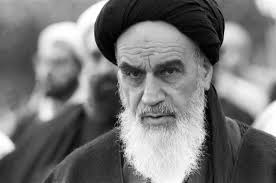Listen to this article

The Revolutionary Leader of the Islamic Republic of Iran
The Life and Legacy of Imam Khomeini: Scholar, Revolutionary, and Founder of Islamic Iran
Few figures in modern history have shaped a nation’s destiny as profoundly as Imam Ruhollah Khomeini. From humble beginnings in a small Iranian town to leading one of the 20th century’s most consequential revolutions, his life was a testament to faith, resilience, and an unwavering commitment to Islamic governance.
🌱 Early Life: The Making of a Scholar
Born September 24, 1902, in Khomein, Iran, Sayyid Ruhollah Musavi Khomeini was raised in a family of religious scholars tracing their lineage back to the Prophet Muhammad ﷺ. Tragedy struck early—his father, Ayatollah Mustafa Musavi, was assassinated when Khomeini was just five months old, leaving him to be raised by his mother and aunt.
From childhood, Khomeini immersed himself in Islamic studies, mastering:
📖 Fiqh (Islamic Jurisprudence)
🧠 Philosophy & Irfan (Islamic Mysticism)
⚖️ Akhlaq (Ethics & Morality)
By his early 20s, he had moved to Qom, Iran’s leading center of Shia scholarship, where he studied under great scholars like Ayatollah Abdul-Karim Haeri Yazdi.
🔥 The Voice Against Oppression
In the 1960s, Iran was ruled by Mohammad Reza Shah Pahlavi, a Western-backed monarch whose policies—including land reforms and secularization—angered religious leaders. Khomeini emerged as the Shah’s most vocal critic, condemning:
❌ Corruption & dictatorship
❌ Western cultural influence
❌ The suppression of Islamic values
In 1963, after a fiery speech against the Shah’s “White Revolution,” Khomeini was arrested, sparking mass protests. A year later, he was exiled—first to Turkey, then Iraq, and finally France.
Yet, even from exile, his recorded sermons spread across Iran, fueling resistance.
⚡ The 1979 Revolution: A Nation Transformed
By 1979, Iran was boiling with unrest. Economic struggles, political repression, and Khomeini’s calls for an Islamic government had turned public sentiment against the Shah.
On February 1, 1979, after 15 years in exile, Khomeini returned to millions of cheering Iranians. Within days, the monarchy collapsed, and the Islamic Republic of Iran was born.
Key Changes Under Khomeini’s Leadership:
✔ Islamic Law (Sharia) became the foundation of governance
✔ “Wilayat al-Faqih” (Guardianship of the Jurist) was established—giving religious scholars ultimate authority
✔ Anti-Western, anti-imperialist policies were enforced
✔ Support for oppressed Muslims worldwide (like Palestinians)
His revolution inspired Islamic movements globally, making him a hero to some and a controversial figure to others.
📜 Writings & Teachings
Beyond politics, Khomeini was a prolific scholar. His works include:
- “Islamic Government: Governance of the Jurist” (the blueprint for Iran’s system)
- “Kashf al-Asrar” (Unveiling of Secrets) – critiquing secular rule
- “Tahrir al-Wasilah” – a detailed fiqh manual
He also penned mystical poetry, reflecting his deep spiritual side.
🕊️ Death & Immortal Legacy
Imam Khomeini passed away on June 3, 1989, at age 86. His funeral drew over 10 million mourners—one of the largest in history. Today, his gold-domed shrine in Tehran remains a pilgrimage site.
Why Does He Still Matter?
✅ To supporters, he liberated Iran from tyranny and restored Islamic rule.
⚠️ To critics, his rule was marked by strict governance and suppression of dissent.
Yet no one denies his impact—on Iran, the Muslim world, and the global balance of power.
💭 Final Reflection
Khomeini’s life forces us to ask:
- Can religion and politics truly mix?
- What price is paid for revolution?
- How should Muslims resist oppression?
Whether admired or debated, his legacy continues to shape history.
“A nation that has millions of martyrs will never be defeated.”
— Imam Khomeini
Leave a Reply